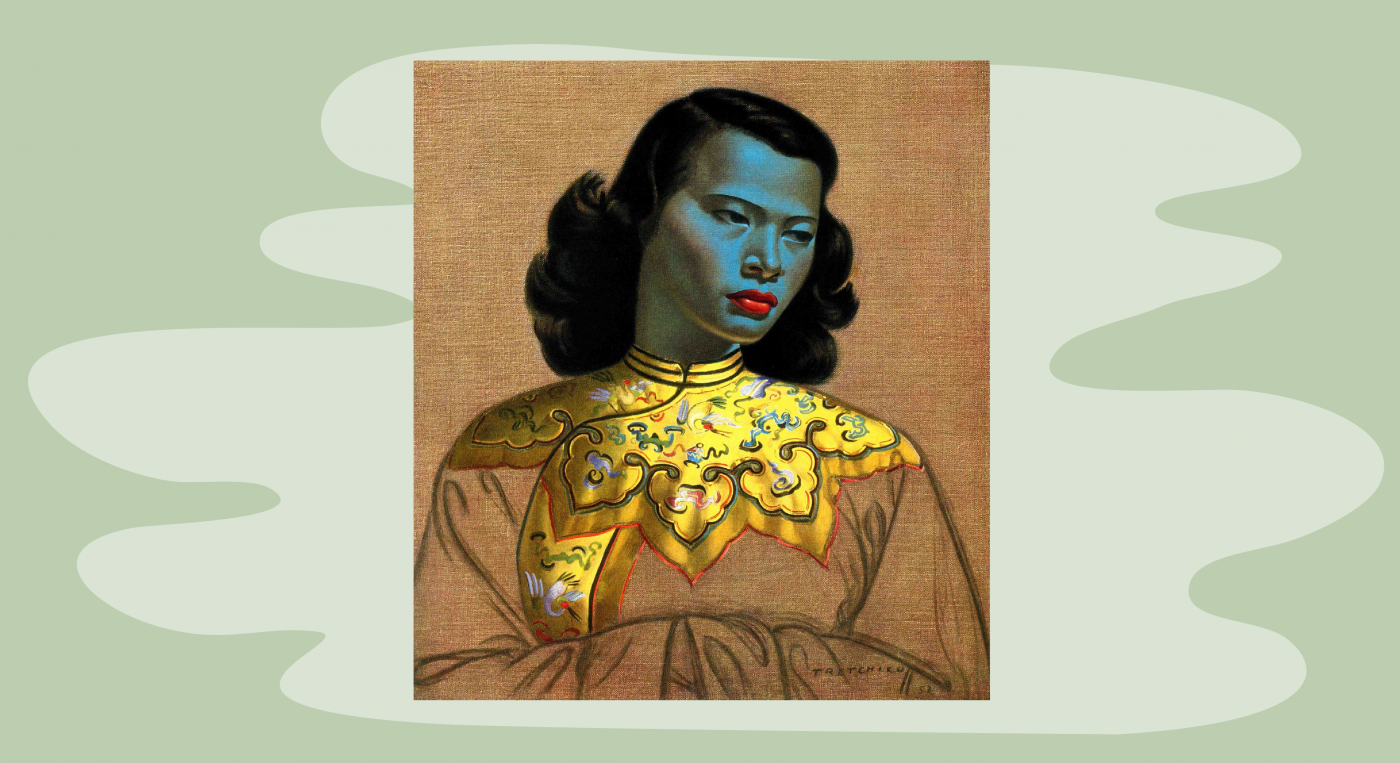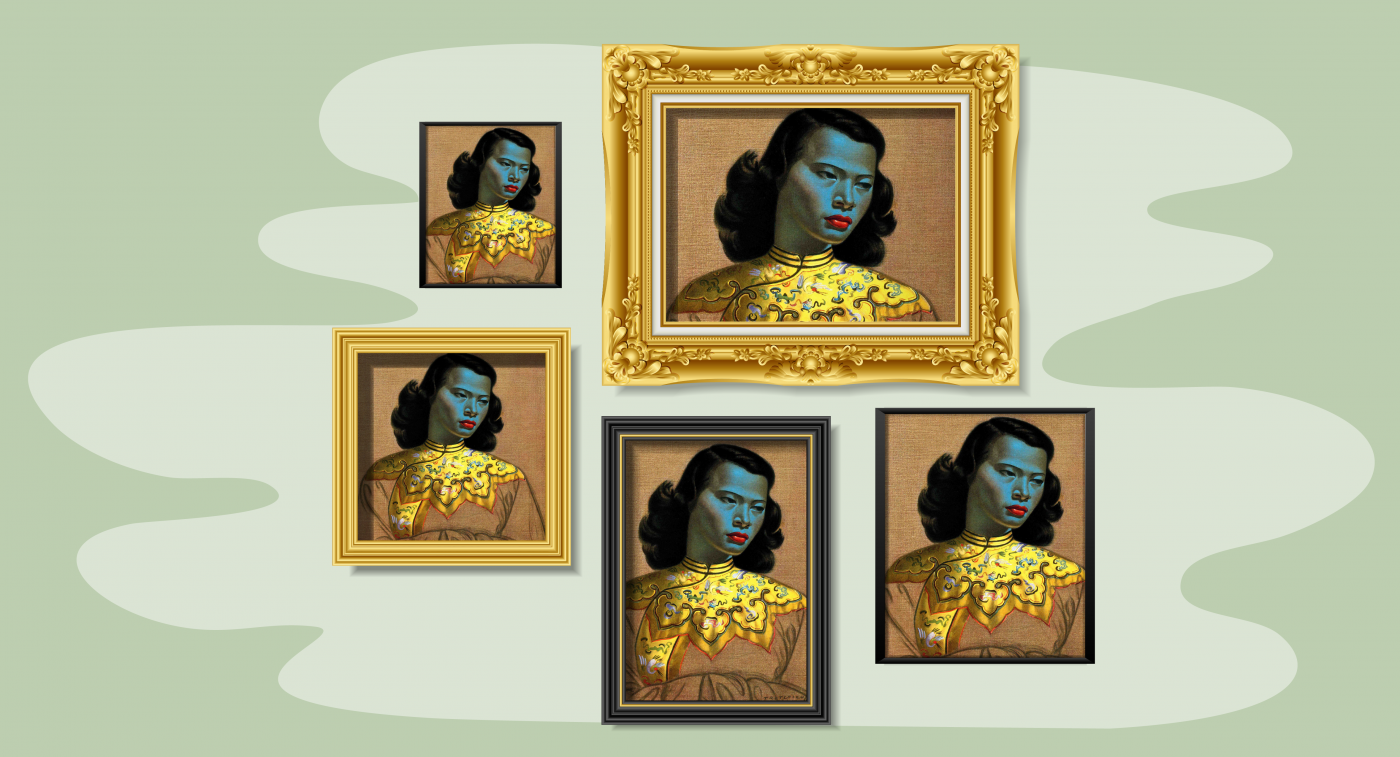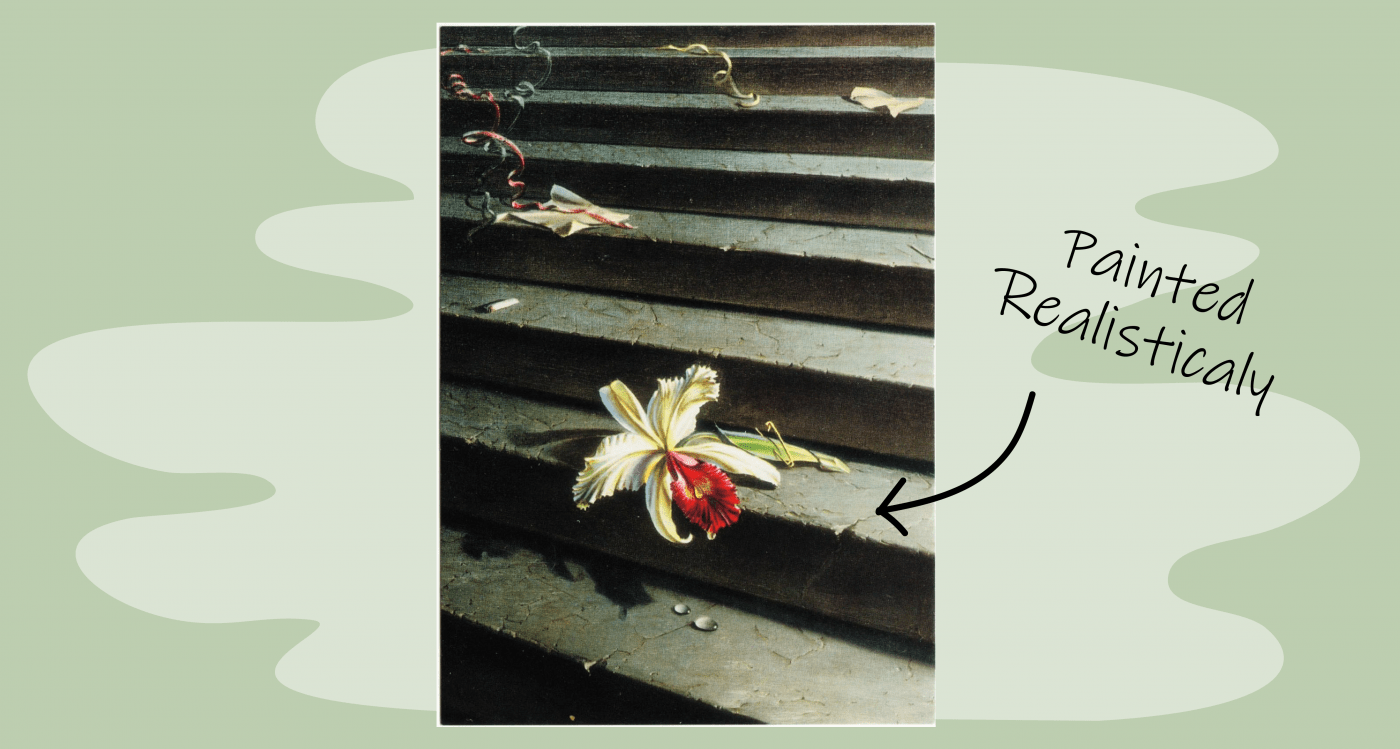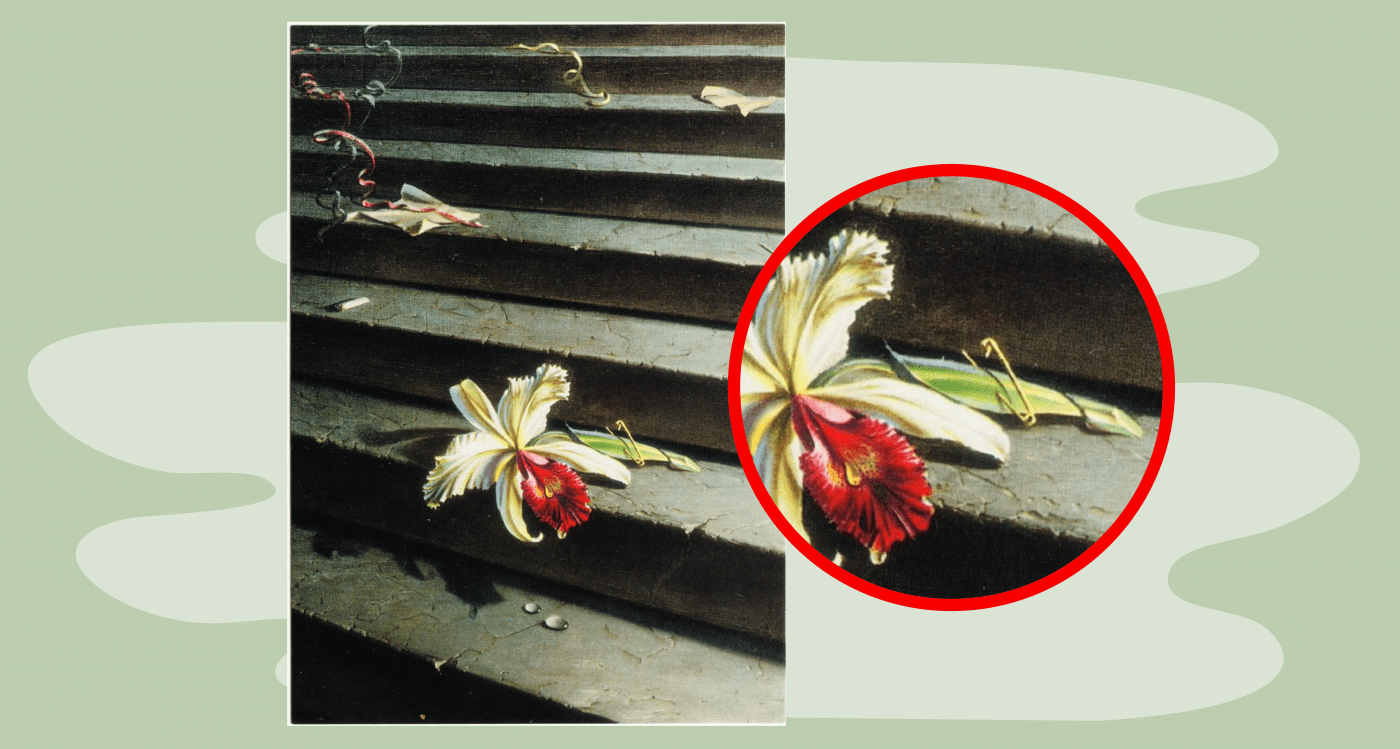No products in the basket.
Art History
Vladimir Tretchikoff: Who was this Amazing South African Artist ? Which 2 artworks were his most prolific ones?
Hi I am artist Lillian Gray and I have someone you need to meet: South African artist Vladimir Tretchikoff. Tretchikoff was an artist whose painting Chinese Girl, popularly known as the Green Lady, is one of the best-selling art prints of the 20th century.

His most famous artworks include Chinese Girl, Mrs Wong and the Balinese Girl but he was sneered at by the elitist art world and often called the ‘King of Kitsch’ but Tretchikoff has made a fortune by defying the art establishment.
He was one of the first pop stars of the art world and even though art critics hated him he has broken sales and attendance records. Let’s quickly look at the dates Tretchikoff lived 1913-2006.
What happened in Tretchikoff’s lifetime?
By looking at these dates we gather that he lived for a long long time and he survived quite a lot:
World War One; The Great Depression; World War Two; the 50’s; the 60’s; Apartheid rule in South Africa; the neon 80’s; the liberation of South Africa with Nelson Mandela; the establishment of the rainbow nation and even the turn of the millennium.
That is indeed a long life – 93 years to be exact.

Where was Tretchikoff born?
Tretchikoff was born in 1913 in Russia – wait a minute Lillian – you just introduced Tretchikoff as a South African artist but he’s born in Russia – precisely – listen to the story and you will know why Tretchikoff is regarded as a South African artist or by some as a South African-ish artist.
What was Tretchikoff’s life like as a youngster?
Tretchikoff’s life is filled with beautiful places from the plains of Siberia to the bustle of Shanghai to Japanese occupied Java to the sun-drenched Cape Town. His story is indeed filled with crazy adventures, narrow escapes, a heart-wrenching love story and eventually world fame.
So I hope you are settled in comfortably and ready to listen to the remarkable story of this artist.
Okay so Tretchikoff was born one day after Christmas in 1913 in the Russian empire. He was the youngest of eight children in a well-off family.
Now at this time in Russia, this is quite important you see most of Russia’s people were poor in fact very poor and Russia was ruled by the tsar, Tsar Nicholas and he was seen as a divine ordained ruler of Russia, so nobody voted for him to lead Russia he was born into royalty. The tsar’s family had all this wealth palaces gold jewels and lots of lands while the people of Russia suffered and starved .
Eventually, the people of Russia had had enough they wanted Tsar Nicholas gone and they wanted to share all the wealth, this movement is called the Russian revolution and it happened in 1917. Tretchikoff’s dad started feeling very scared because the family had money and a nice big home.
They were scared that the people would storm their house kill them and take all their land so Tretchikoff’s family packed their bags and fled to China. In China they were refugees, the father couldn’t find work and they lived in this makeshift house, they were so poor and cold.

The death of Tretchikoff’s mother.
At the tender age of eleven Tretchikoff’s mother died and when he saw that his mother was busy dying he grabbed a sketch pad and a pencil and started drawing her face frantically. They couldn’t afford photography and he was afraid he would forget her face forever.
Tretchikoff’s father couldn’t deal with losing the love of his life, he didn’t want to live without his wife, so one day he left home and was never to be seen again – it is believed that he walked into a frozen river and drowned.
The Tretchikoff children were now without parents, they had to fend for themselves and quickly find jobs. Tretchikoff always wanted to be an artist and was so obsessed with drawing and painting, he dreamt of being an artist in Paris.
One day so he set out to find a job using art. He found a job as a painter at the Chinese City Russian opera house, he often helped by mixing colours and painting sections of the performer’s backdrops and so he managed to stay in school until the age of 16.
At the age of 15, there was an art competition. Artists were asked to paint portraits of Chinese and Russian leaders for a boardroom. Vladimir entered the competition not mentioning his age and to his family’s surprise he won and with all that prize money.

What was his life like in Shanghai?
Tretchikoff and his brother decided to leave school and to leave China, they wanted to go to Paris. Unfortunately, their money wasn’t enough and they only got as far as Shanghai so they decided to rent a flat and get other tenants to join them to increase the income and once they had enough money then they would leave for Paris.
He started working as a graphic designer, that is a commercial artist, which means you get to create pictures and advertisements for clients. He also started making cartoons for local Russian and English language magazines.
At a dance, Tretchikoff met the most beautiful woman he had ever seen – Natalie – and they started dating forming quite a serious relationship. His family advised against it and his one brother said you will find yourself married before you even launch your art career and they convinced him to go for his art career and leave Natalie behind.
He applied for a job in Singapore as an art director, so he kissed Natalie goodbye and left for Singapore by boat. On the boat he realized he made a terrible mistake he couldn’t live without Natalie so he sent her a telegram asking her to marry him.
What did he do in Singapore?
Arriving at Singapore’s harbour he wasn’t sure what Natalie’s answer would be but he received the telegram at the dock. Natalie was already on a boat on her way to him and they married the day she arrived and soon they had a bouncing baby girl called Mimi.

In Singapore, he worked as a graphic designer at an advertising agency, he was determined to be famous, so he would ensure that Natalie and himself would get invited to every single important party.
They often didn’t have money for fancy dresses for Natalie so Tretchikoff made dresses for his wife to attend wealthy functions. They soon became friends with the high and mighty of Singapore.

In 1940 the second world war spread to the Pacific, he became a propaganda artist working for the British ministry of information drawing cartoons in favour of the British and joking with the Japanese.
World War Two approached fast and eventually Singapore was under siege. The country decided to evacuate women and children first, they knew the Japanese were listening so they couldn’t tell the families where they were taking the women and the children.
For Natalie and his daughter’s Mimi’s safety Tretchikoff had to load them onto a ship, not knowing if he would ever see them again. Eventually, men were allowed to leave Singapore but only with a permission slip, but because of all of his important rich friends, his name was on the list of men allowed to leave.
Soon after they left the ship he was on was bombed by the Japanese, only 42 people survived and he managed to escape on one of the lifeboats.
What happened after Tretchikoff’s narrow escape?
They decided to row to the closest place of safety, Sumatra., Once they could see land they realized the Japanese had already invaded and they had to keep rowing. They decided to continue to Java.
They rowed to Java which took another 19 days and when they got to Java it was also occupied. Food has now run out and they desperately needed supplies.
They sailed past the rural huts trying to get the locals to help them but nobody could understand them when asking for food.
At a particular hut Tretchikoff saw crayons and paper in the corner and he started drawing what happened to them. With the pictures he could explain their saga and their plight: the ship being bombed; them escaping on a row boat and rowing for more than 800 kilometres.
Soon a man ordered his wife to bring fresh fruit and pots of rice.
This is such a great situation where art literally saved their lives, because art is a universal language, everybody can understand pictures,

Tretchikoff was captured by the Japanese
He was caught by the Japanese and imprisoned. The cell that he was kept in was designed for only eight people but instead they had 35 people crammed in there, nobody could sit or stretch or even stand properly.
Tretchikoff demanded to be released because he was a Russian citizen and they had no right to keep him. Russia was not at war with Japan. But then they found the cartoon he drew ridiculing the Japanese and said, “if you are not at war with us then what is this?”
They locked him up for another three months and eventually let him out on parole forcing him to design propaganda posters for the Japanese war machine.
He wasn’t allowed to leave the country and he had no idea if his wife and child were even still alive. He met Lenka, her husband was in prison and he wasn’t sure if he’ll ever see his wife again.
She asked Tretchikoff to come and live in the back garden in a cottage and make that his studio and eventually, Tretchikoff asked her to pose for him, and she became one of his most famous models. They found some art supplies and Tretchikoff had lots of time to paint.
He painted every single day when he wasn’t working for the Japanese government. He always used to tell Lenka that one day he will go and find his wife and child and that he will have a solo exhibition with all these paintings.

What happened to Tretchikoff in Cape Town?
When World War Two ended Tretchikoff left Indonesia for South Africa. He went looking for his wife and daughter, determined to find them – he concluded that the ship that left Shanghai either travelled to Australia or South Africa and he decided to start looking in Cape Town.
One day while working in Cape Town he heard somebody talk about a woman called Natalie that was giving Russian language lessons in Cape Town, He thought to himself that must be his wife, could it be, he started towards her, and it was Natalie, they found each other.
Later when asked about his nationality Tretchikoff would say “I am South African, this is my lucky country, this is the country that gave me back the love of my life and my daughter.”
Tretchikoff spent the rest of his life living in South Africa. He referred to himself as a South African artist. He only spent a small amount of his childhood in Russia but most of his life in South Africa. He always said Russia only gave him war and pain, but South Africa gave him the love of his life.
Once reunited with Natalie it was time for Tretchikoff’s big solo art show, he brought all the paintings he had done in his time with Lenka and he wanted to exhibit at a gallery.
How did Irma Stern’s opinions change the course of Tretchikoff’s exhibitions?
At this time in South Africa Irma Stern was quite an established artist – she was well known on the art scene and respected for the understanding of German Expressionism.
Irma heard about this artist from Russia and wanted to see Tretchikoff’s work. She glanced at the work and left without an opinion.
When Tretchikoff tried to confirm his booking with the gallery they had cancelled it and he couldn’t understand why? Later it was revealed that Irma stern went to the gallery and said “you cannot possibly exhibit that rubbish of Tretchikoff”. Irma Stern believed in German Expressionism and she didn’t like Tretchikoff’s style at all.
Tretchikoff found another small little unknown gallery to exhibit his work and he made it his mission to draw as many people as possible. His exhibition was a success, he managed to draw twice as many people to his exhibition than Irma Stern and Maggie Laubser had at theirs.
This had such a great impact that a department store contacted Tretchikoff they wanted to draw crowds of people to their shop so they offered to pay for all of Tretchikoff’s expenses if he would exhibit in their store.
So Tretchikoff said yes, even if it was quite unconventional at the time. Artists needed to exhibit in galleries to be taken seriously but Tretchikoff decided he doesn’t need the galleries.

What was the outcome of his Department store exhibitions?
The 11 day show clocked up no fewer than 34 000 visitors. After that success he vowed never to exhibit in galleries again but only department stores. His next exhibition was in Stuttafords in Cape Town and 5 000 people attended the opening. He signed two thousand prints – it had over fifty thousand visitors in ten days.
Then he moved the show to Johannesburg Stuttafords who was visited by sixty-nine thousand people. These turnouts really fueled the battle between art critics and the elitist art world with the fame of Tretchikoff.
The media called these pictures chocolate box pictures or they look like toothpaste adverts and to this Tretchikoff would just reply that Toulouse Latrec was a poster artist for the Moulin Rouge and he became the toast of Paris.
Tretchikoff always questioned whether a hundred thousand people wrong and a handful of art critics right? And so Tretchikoff positioned himself as the artist of the people.
He wanted everybody to be able to afford a beautiful piece of artwork in their home. He signed a contract with a big printing company and started selling prints of his artworks.
This was a great way to make a deal with the department stores to exhibit his art. People would buy a print get it signed in-store by Tretchikoff and then also buy the frame from the department store.

What happened between 1948 and 1952?
Between 1948 and 1952 Tretchikoff clocked over two hundred and fifty thousand attendees at his art exhibitions. Now why on earth was his art so popular? Who bought it? Why did Tretchikoff never really paint white people? His customers were white but he painted portraits of Indonesian people, Chinese people, Cape Malays, Zulus and Xhosas.
We will discuss some reasons on why his art created such a hype a little bit later but let’s just consider this is the time of Apartheid in South Africa where people were sorted and divided according to race, do you think the Apartheid government liked Tretchikoff’s art?
Do you think they liked it that he painted all these different kinds of people from different cultures that weren’t like him? do you think they liked that he celebrated people that are other or different?
Well soon Tretchikoff was invited to come and exhibit in America but two months before his departure to the USA somebody broke into the storeroom where his paintings were kept and sliced them all to shreds with a knife.
Works by other artists renting the same store room were not damaged. Tretchikoff quickly decided to move his other paintings to his house. He had seven paintings hanging in quite large frames in his studio, set up for a film shoot and four nights later an intruder returned and also slashed these with a knife.
He was devastated and he didn’t have enough time to complete more works for his USA exhibition.
He thought that maybe somebody from the art community that hated his art and style so much or even the government was behind all of this.
First Tretchikoff exhibited at a small gallery in America and drew large numbers of people. Once he had this as proof, he went to the department stores in America and asked them if he could duplicate his success in South Africa by exhibiting in their store.
At first they were very skeptical, not believing that Tretchikoff could draw so many people but he had his statistics from his show in America so they gave it a shot. This is how Tretchikoff launched his American tour. Around 57 000 people saw his show in Los Angeles and 52 000 in San Francisco.
In Seattle a rival show which included Picasso and Rothko had far fewer attendees. Not knowing of the drama Tretchikoff created back in South Africa, US reporters called him South Africa’s most astounding artist.
Tretchikoff’s strategy was working. He believed that highbrow art remain in galleries and he would exhibit where the public went – department stores.
The show also ended up travelling to Canada in 1962. Tretchikoff had a large exhibition at Harrods in London, this exhibition was attended by a whopping two hundred and five thousand visitors.
By now Tretchikoff was super-wealthy. They had a large house in Cape Town, they had lots of fast cars and all the luxuries they ever dreamed of.
Tretchikoff’s wealth protected him from the art critics and every time they would sneer at him in the press he would simply say “well I’m laughing all the way to the bank.”
Which paintings helped to create his world fame?
Let’s look at one of the paintings he created that helped him create this world fame!

His Chinese Girl, a 1952 painting featured Eastern model Monika with blue-green skin, is one of the best-selling prints of the 20th century. More than half a million print copies have been sold, singer David Bowie once said that if he could own any painting in the world it would be the Green Lady by Tretchikoff.
David Bowie also grew up with the Tretchikoff print above the mantle in their living room and rumour has it that is what his famous song Little China Girl is based on.
Prints of this painting became widespread during the 1950s and 1960s and the painting was featured in various plays and pop culture such as Alfred Hitchcock’s movies and Monty Python’s Flying Circus.
Other popular paintings of oriental figures were Mrs. Wong, Lady from Orient and Balinese Girl. Eventually the frenzy to own a Tretchikoff print died down and things became a bit calmer but by that time Natalie and Tretchikoff were already wealthy and settled.
Interest in his artworks underwent a resurgence in the late 1990’s as part of a revival of 1950’s retro decor and people wanted these Tretchikoff in their houses again.

The most expensive Tretchikoff painting sold to this day is Chinese Girl that sold for more than 17 million Rand.
Throughout his entire life the elitist art scene never accepted Tretchikoff. The South African national gallery never bought a Tretchikoff painting, when asked about it they said it does not meet the standards of quality and excellence required for the gallery,
On another occasion they admitted the truth is that we cannot afford any of his paintings and even if they could, his best works were now no longer available. The artist had sold them long ago and the owners had no intention of parting with them.
Tretchikoff once said that the only difference between himself and Vincent van Gogh was that van Gogh starved and he had become rich.
One of Tretchikoff’s admirers said “You put a brick in the Tate in modern today and it’s art. Who decided that the Green Lady is kitsch – not the hundreds of thousands of people who bought it.”
Another admirer of Tretchikoff said he achieved everything that Andy Warhol stated he wanted to do, but could never achieve because of his ‘coolness’.
Tretchikoff suffered a stroke in 2002 which left him unable to paint and he died the 26th of August in 2006 in Cape Town which was his home since 1946. He was survived by his wife Natalie, his daughter Mimi, four granddaughters and five great-grandchildren. Natalie died soon after in 2007.
Soon after his death the Tretchikoff trust was established, the trust is based on Tretchikoff’s life motto,
Express your passion do whatever you love take action no matter what.
Tretchikoff’s life motto.
Today you can still buy various Tretchikoff products like pillows and bags in various stores it was only many years after his death that the South African national gallery decided to have an exhibition in Tretchikoff’s honour.
What were the characteristics of Tretchikoff’s paintings?
What did he paint?
Tretchikoff was a self-taught artist who painted realistic figures, portraits, still life, animals. It’s important to note that his art included absolutely no politics. South Africans were really scared of communism and called it the “rooi gevaar” (red danger) so there are no references to Russia in his artworks.
Where did he get his inspiration from?
Tretchikoff painted his subjects was often inspired by his early life in China, Singapore, Indonesia and later his life in South Africa and its wonderful cultures Tretchikoff didn’t show at galleries, he exhibited his art at shopping malls and massive department stores because he believed that that is where the people are.
What was Tretchikoff’s style?
He is known and placed under the movement symbolic realism. What on earth is symbolic realism?
Let me explain by showing you this artwork it’s called The Lost Orchid. First we notice the style of painting, the orchid is drawn with a lot of detail and looks very real but the orchid is also a symbol meaning more than just a normal flower.

Tretchikoff spotted this discarded orchid on the steps when he left the war camp and was released on parole. In Indonesia orchids were 10 times more expensive than roses. It was a massive luxury to be given an orchid.
On closer inspection, we can see a pin inserted into the orchid almost as if it was used for as a corsage at an event or a festival.

Tretchikoff stopped and looked at this beautiful flower discarded on these steps amongst the rubbish and he saw these little dew drops gathering on the petals. He felt as if the flower was weeping, how could somebody use such beauty and just throw it away?
He felt like the flower was left alone crying, we could now possibly see this flower as a symbol of the destruction of beauty in a war-torn country.
Tretchikoff worked in oils, watercolours, ink, charcoal and pencil but he is best known for his works that were turned into prints.
Natalie often said that Tretchikoff only worked on one canvas at a time and he would shut himself away daily to paint. He would take the phone off the hook, close his studio door at seven in the morning and painted until five.
What was the purpose of Tretchikoff’s paintings?
What was the purpose of Tretchikoff’s artwork and why were they so famous, well there are lots of different theories but I will discuss the ones that I believe in.
I believe that in locked down Apartheid South Africa people were excluded felt disconnected internationally and all the sanctions and stuff that went on in the country.
By buying a Tretchikoff print they were able to travel in the living rooms they could get a taste of the exotic, you see, when you paint somebody green blue or purple you’re finally able to look past the race and see the human behind it.
The speculation for Tretchikoff being so popular in London is said that Londoners are colour starved and especially after the dreary World War Two people wanted colour they wanted positivity they wanted joy in the 50’s London’s economy was also booming prime minister Harold Macmillan was famous for saying you’ve never had it so good so there was money for people to buy art and prints.
Tretchikoff, however, didn’t paint with a higher meaning, He painted because it gave him joy and he wanted to share that joy with others. He had no political motivation. He wanted to be the champion of easy to understand art, a painter of the people.
Boris Gorelick stated that whatever the outcome, this bold experiment raises bigger questions. Does popular art belong in an art museum at all and if it does how should it be represented there? Whether you think Tretchikoff’s art is brilliant or kitsch Tretchikoff keeps on coming back into popular culture again and again.
Also look out for my blogs on another famous South African Artist, Willie Bester

